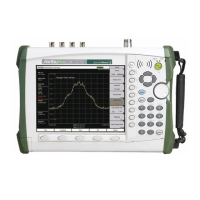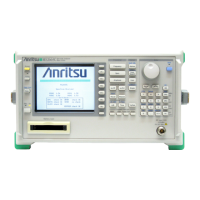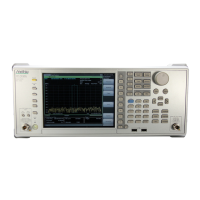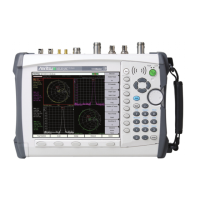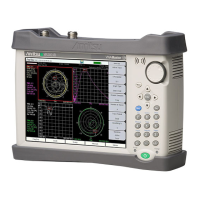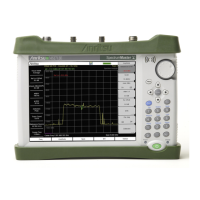Section 11 LabVIEW Measuring Instrument
11-2
About LabVIEW
LabVIEW is a graphical program language suitable for controlling measuring
instruments and saving and analyzing data.
LabVIEW allows you to create a program as if you drew a circuit diagram, so you
can easily get used to use it compared with text-based program languages. The
execution speed is almost the same as the C language.
LabVIEW supports various libraries related to measuring instrument control and
data saving, analysis, and display. Using LabVIEW and measuring instrument
drivers, you can create a graphical user interface (GUI) program with ease.
11.1 Installation
The floppy disk (MX971003G/S) that come standard with the MS9710A store the
following files.
MS9710AG.EXE (GPIB driver)
MS9710AS.EXE (RS-232C driver)
These files are self-melting-type compressed files. Copy the file storing the driv-
ers you want to use to an appropriate directory, then melt the file.
Installation example
(1) On X:¥LABVIEW (X is the drive on which LabVIEW is installed), create a
directory “MS9710A.LIB.”
(2) Copy the file (MS9710A.EXE or MS9710AS.EXE) storing the drivers you
want to use to this directory.
(3) Select “Specify File Name and Execute” from the icon menu of the program
manager, and enter
X:¥LABVIEW¥MS9710A.LIB¥MS9710AG.EXE (GPIB driver)
or
X:¥LABVIEW¥MS9710A.LIB¥MS9710AS.EXE (RS-232C driver)
Then, press the OK button.
The following VI library files storing measuring instrument drivers will be
created in the directory MS9710A.LIB:
MS9710AG.LLB (GPIB)
MS9710AS.LLB (RS-232C)
(4) After making sure the above library file has been created, delete
MS9710AG.EXE (or MS9710AS.EXE).
